I hope these ramblings about my exploration of 110 and sub-miniature are of some interest beyond my keyboard but here’s the next chapter. When my Minolta 460 Tx 110 camera seemed to have died after I tried to modify it to take recycled cartridges, I resigned myself to having to use Lomgraphy films in my remaining good example. But, rather like Oscar Wilde said of the press reports of his death, this was somewhat premature.
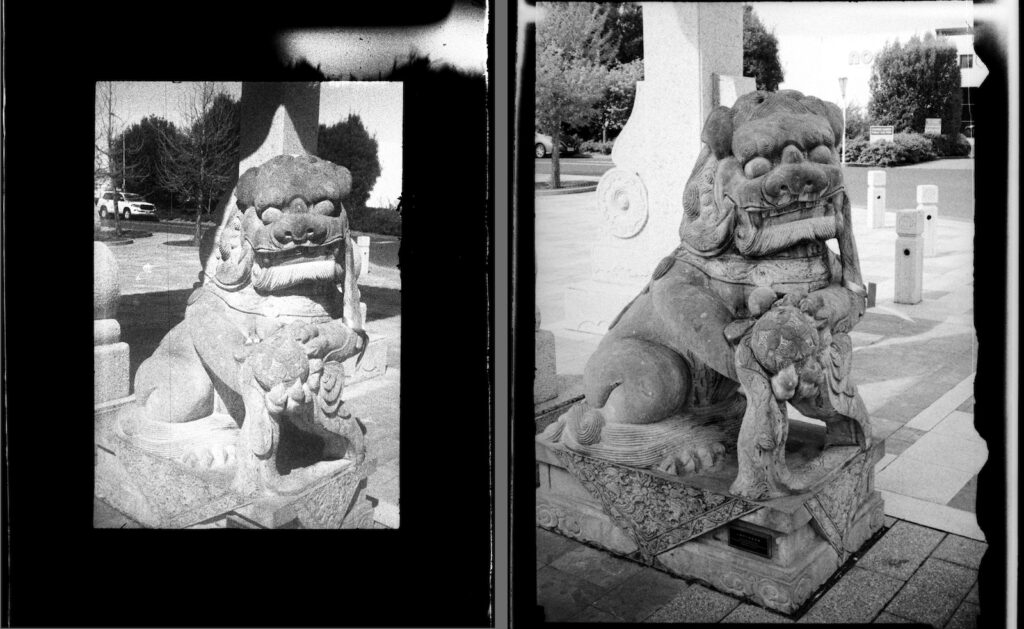
It turns out that, after all, it can be made to operate with unperforated film and give the larger negative the lens and gate opening promises. The featured image is where all this started with my first 110 film and its 17 x 13 mm cut-down framing. In addition, sub-miniature and 110 formats tend to have standard focal lengths a little on the long side compared with 35mm. These same size examples give an idea. The 16mm MG 14 x 11 image from its 20mm lens is more tightly framed than the modified 460 Tx even though the 110 has a longer focal length of 26mm to cover its 19 x 13.5 image.
Revelations.
Risking being considered a bit obsessive but thinking I had little to loose I began finding out what had gone wrong. My first discovery was that amongst the many intricate interlocks on the camera, one was triggered by opening the film door which releases a sliding plate found on the side of the film chamber, freeing the apparently frozen wind-on. Why this didn’t occur to me at the time, I guess the red mist of frustration had descended.
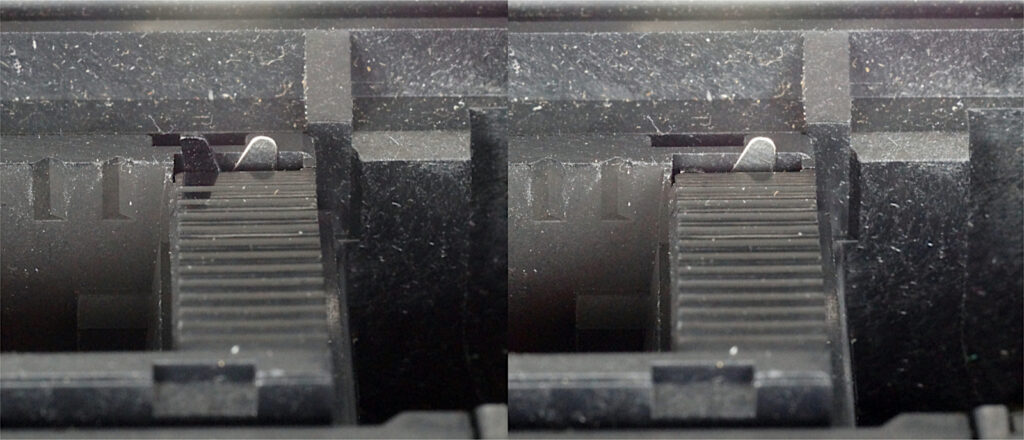
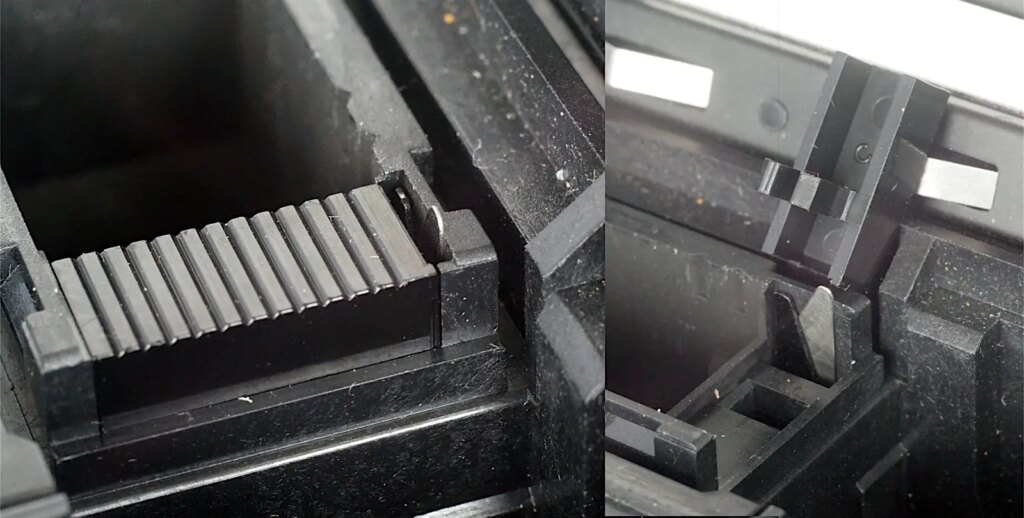
The next was that there is a second, smaller, black feeler arm that is quite hard to see which also engages with the film perforation. I had thought that the silver coloured arm controls both the frame spacing and the shutter release. In fact the smaller, black feeler is the one linked to the shutter, rising when the shutter is cocked during wind-on and dropping out of sight when the shutter is released. I hadn’t noticed it earlier as I never leave a shutter wound. This also needs to be shortened to cheat the interlock into sensing that the arm has risen into the perforation allowing the shutter fire.
Further modifications
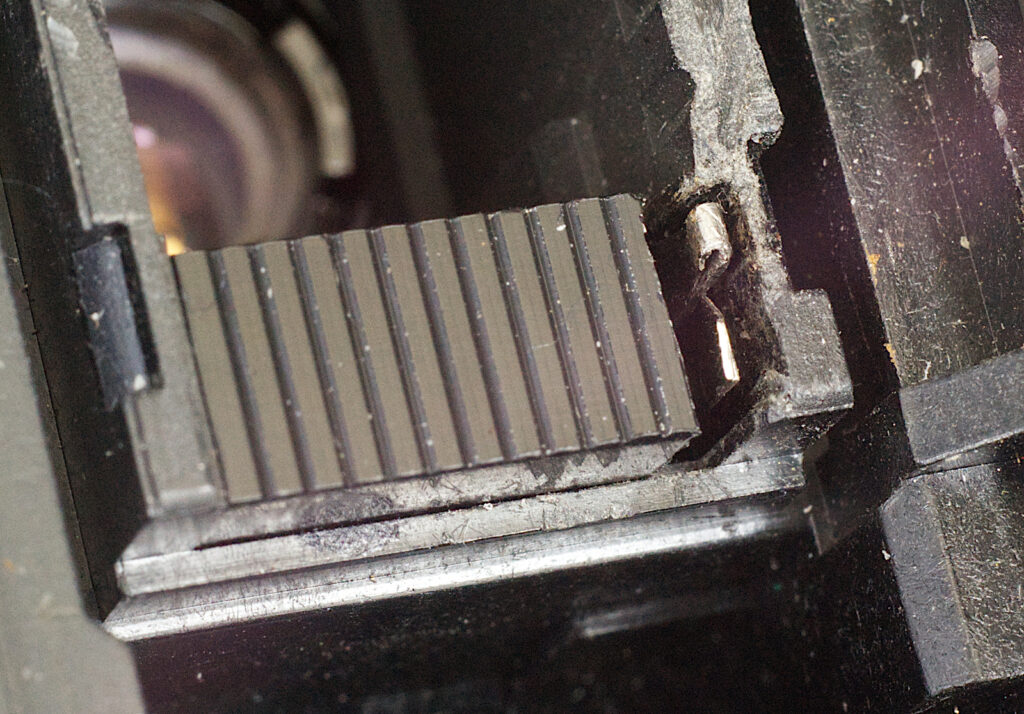
Unfortunately, this new modification proved easier said than done. This smaller arm is made from a much harder metal and couldn’t be snipped off with nail clippers like the silver one had been, the clippers just leaving a dent. In the end I had to bend it over the dent to shorten it so that it remained below the rim of the gate and the removable section of the gate had to be trimmed to make room. With this done, the shutter releases and film transports OK, just a little further each wind, giving fewer exposures than a commercial film as I had already established. The wider spacing accommodates the extra 2mm on the long side of the frame without overlap.
Loading film.
I adopted a suggestion from Bob Janes to stick a short length of backing paper inside the cartridge top plate and attach the film directly to the take-up drum. I didn’t trim the length of film I loaded to the recommended 47cm but left it as cut from the slit roll, roughly 75cm, which still fitted into the feed side of the cassette. I thought the film might have bound up in the take up side if the extra length didn’t fit indicating it was full but this didn’t happen in practice. I only noticed a slight lightening of the wind-on which I will have to look out for in future. This first film gave me around 18 exposures.
Back into action.
Alongside all this my recently finished film slitter has provided some Rollei Superpan 200 in un-perforated 16mm widths. This is a very fine grained film with impressive acuity that I felt would suit this format well. It appears to originate with Agfa-Geveart in Belgium, based on an aerial surveillance product and has extended red sensitivity. It responded well to Rodinal in my earlier tests in a TLR.
All went well, transport and shutter working perfectly and I produced some good negatives. Unfortunately I managed to fog much of the film whilst opening the cartridge to load the tank but enough survived to prove to me that everything had worked well and the film really is a good match for the format. I processed it in Rodinal 1:25 for 8 minutes at 20ºC as recommended by the Massive Development web site, http://www.digitaltruth.com/devchart.php for full film speed.
And the increased negative size and fine grain make a big difference as I hope these examples show.
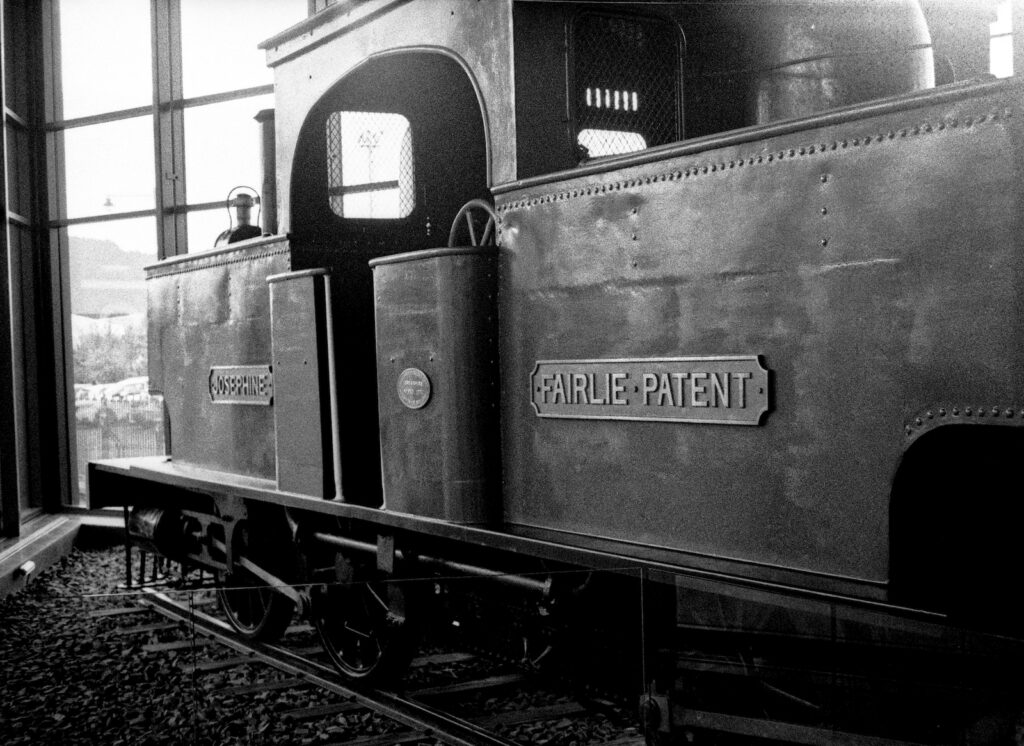
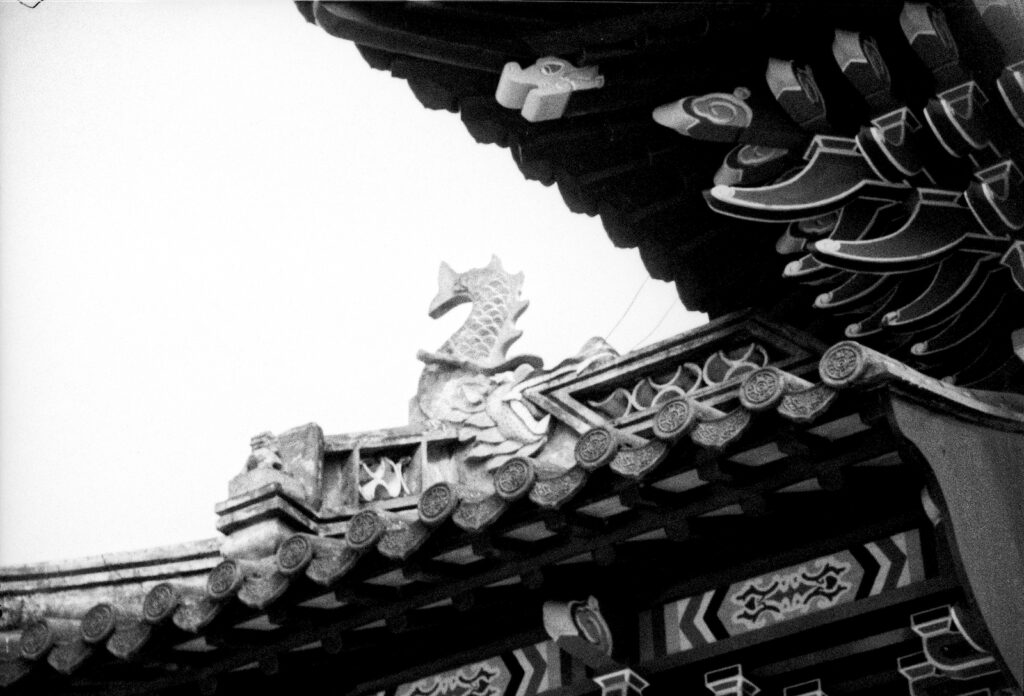
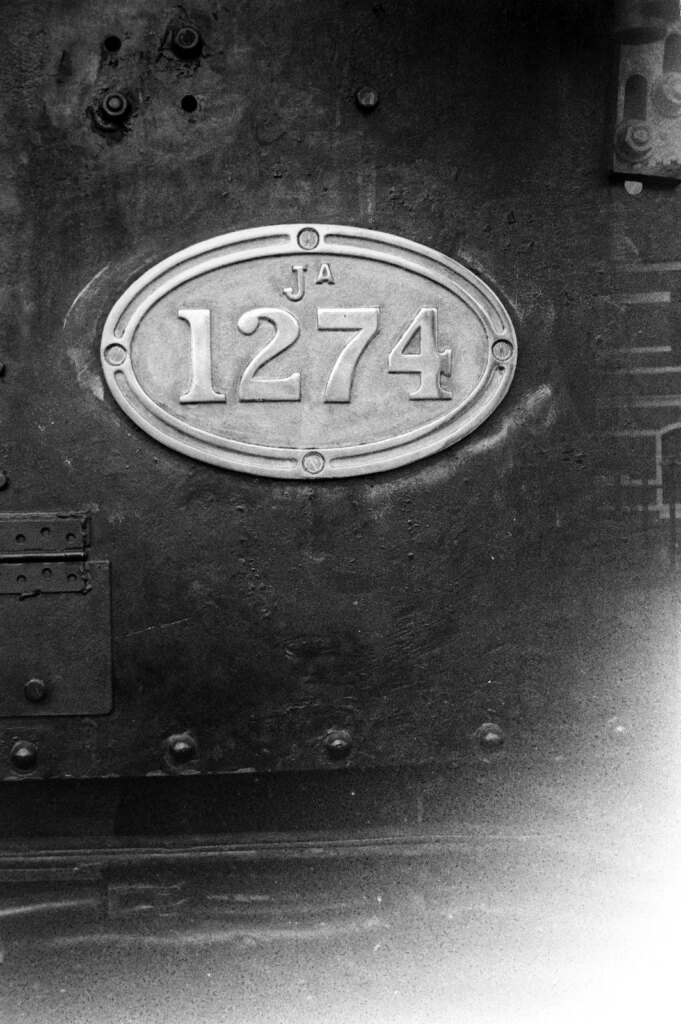
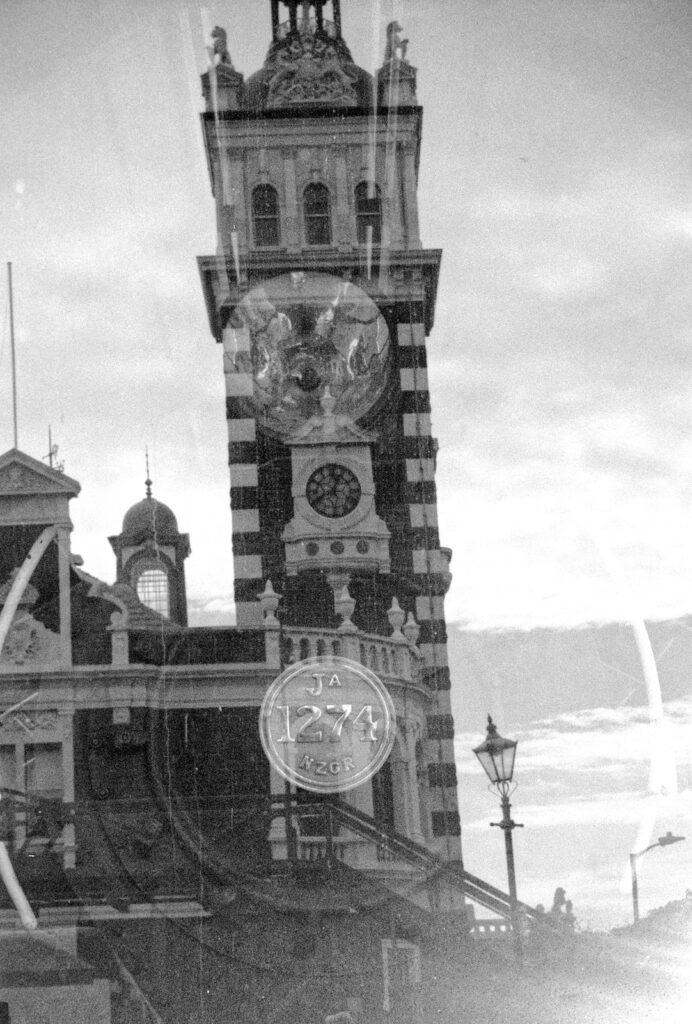
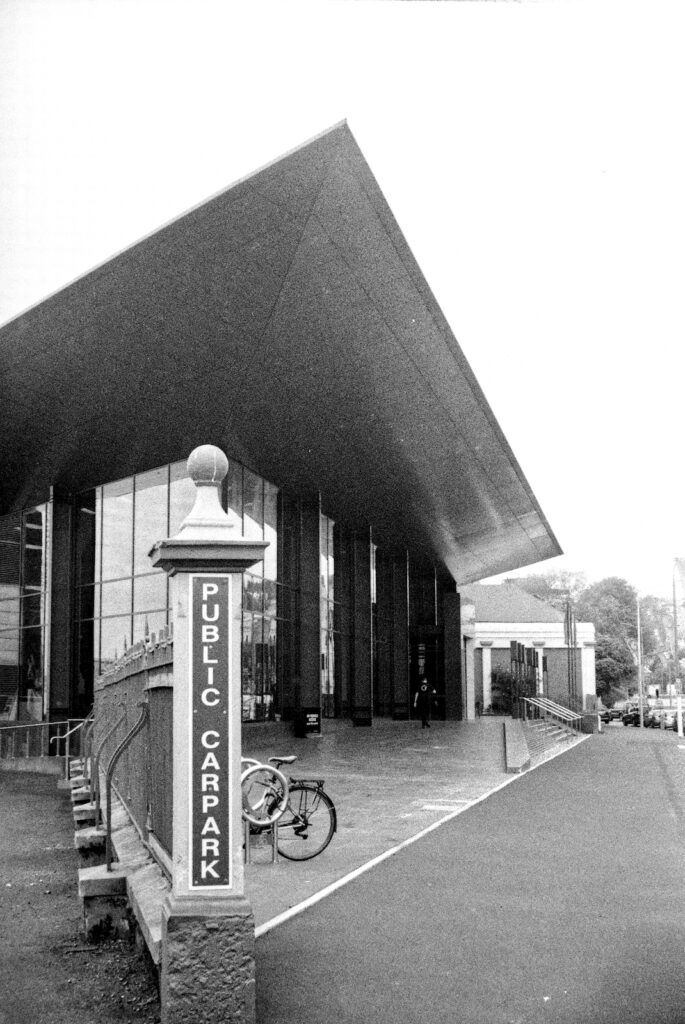
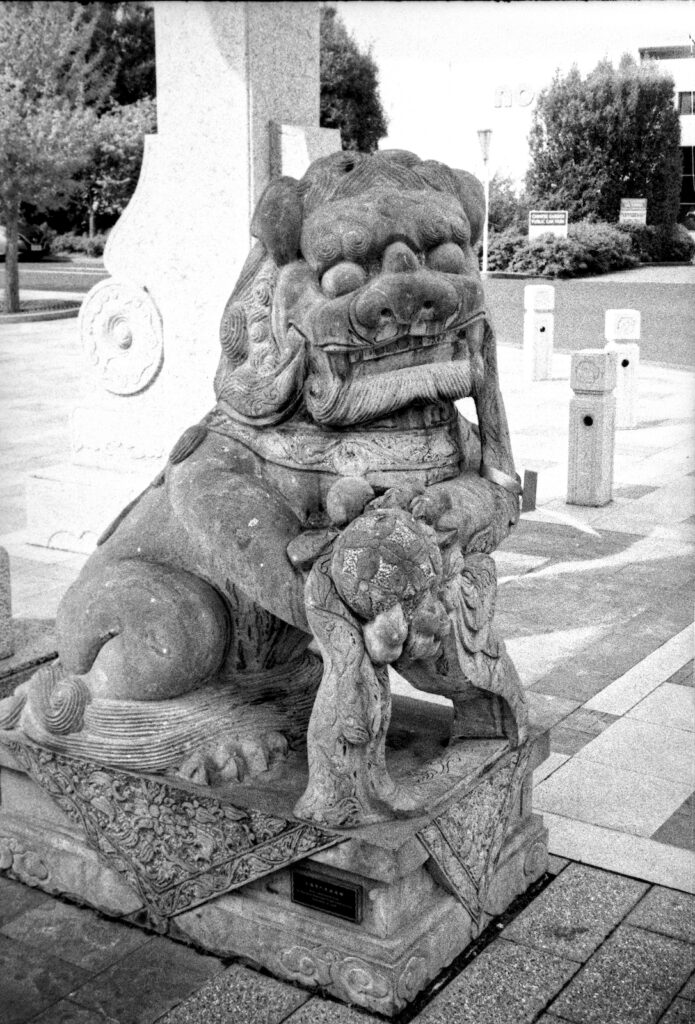
Decisions.
So now I have the decision to make as to whether to modify my other 460 in the same way, though an attempt with my Dremel slightly damaged the modified body and needs more care if I do. If it were to be modified I wouldn’t be able to use the excellent Tiger colour film so maybe I will eventually have to make a film perforator to have the best of both worlds. A dismantled film splicer awaits on my bench. Until then I can use both with only the unmodified one for colour, being fully functional and having flash and warning lights available. The first one I bought lacks any power from the electrics but is a good but flash-less manual and now gives the larger negative. Job (nearly) done.
Share this post:
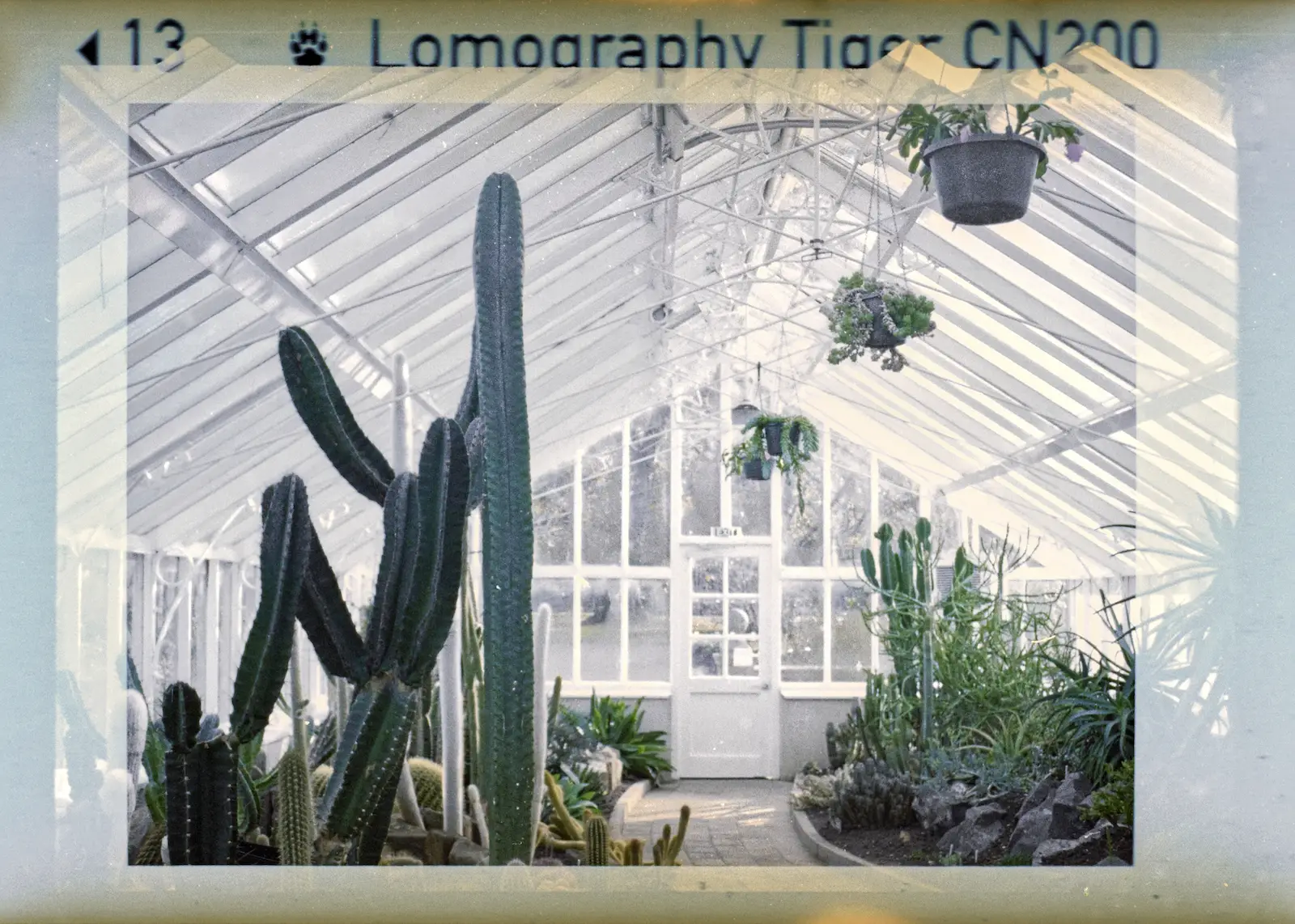
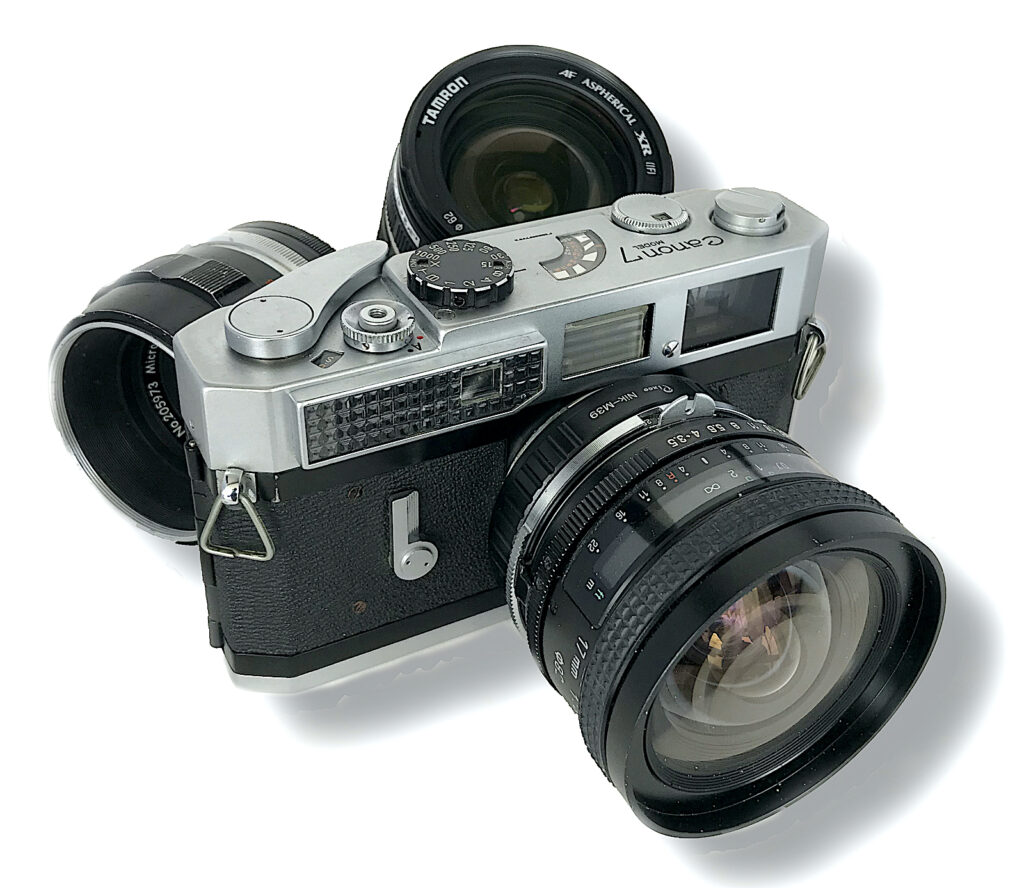
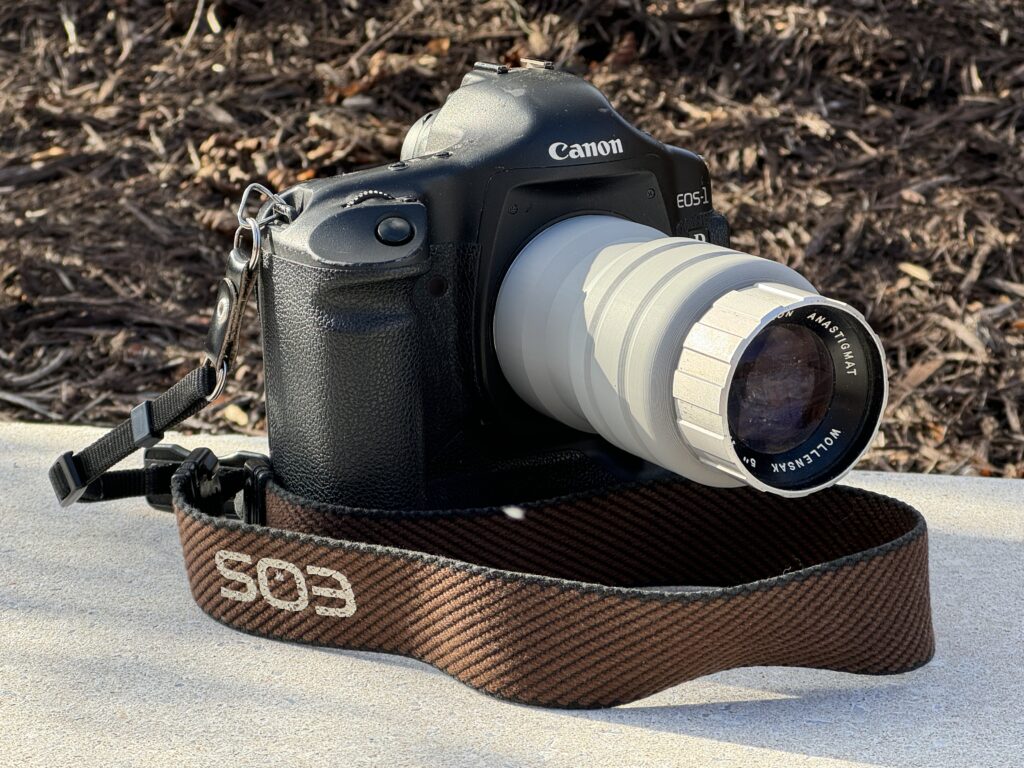
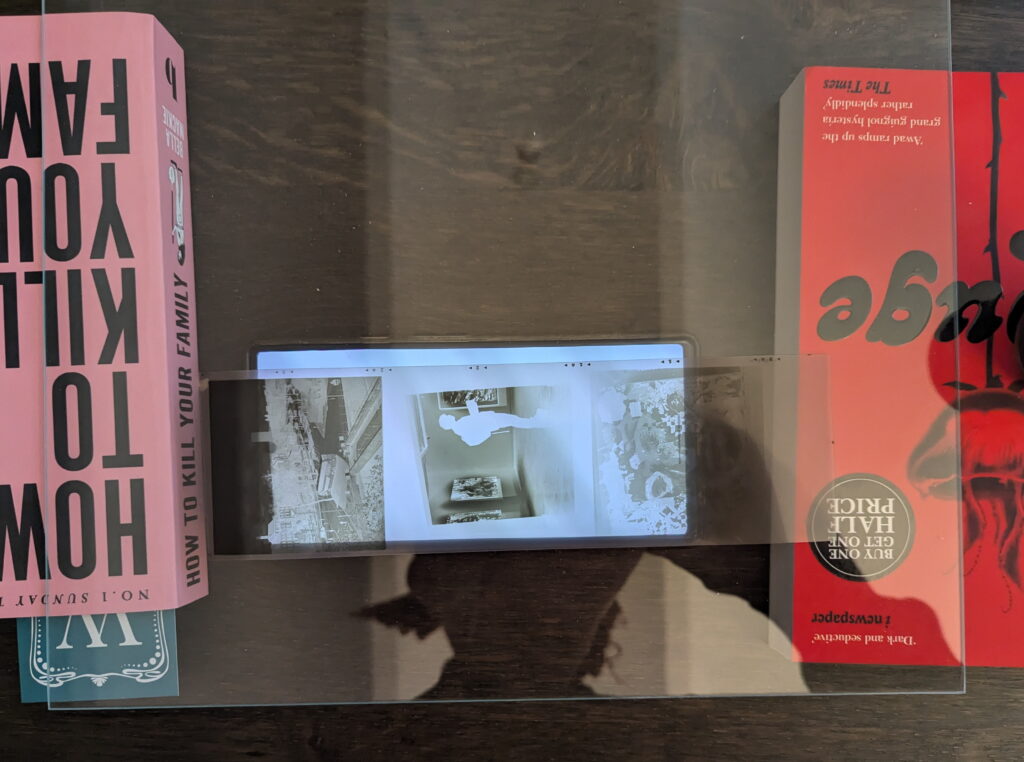
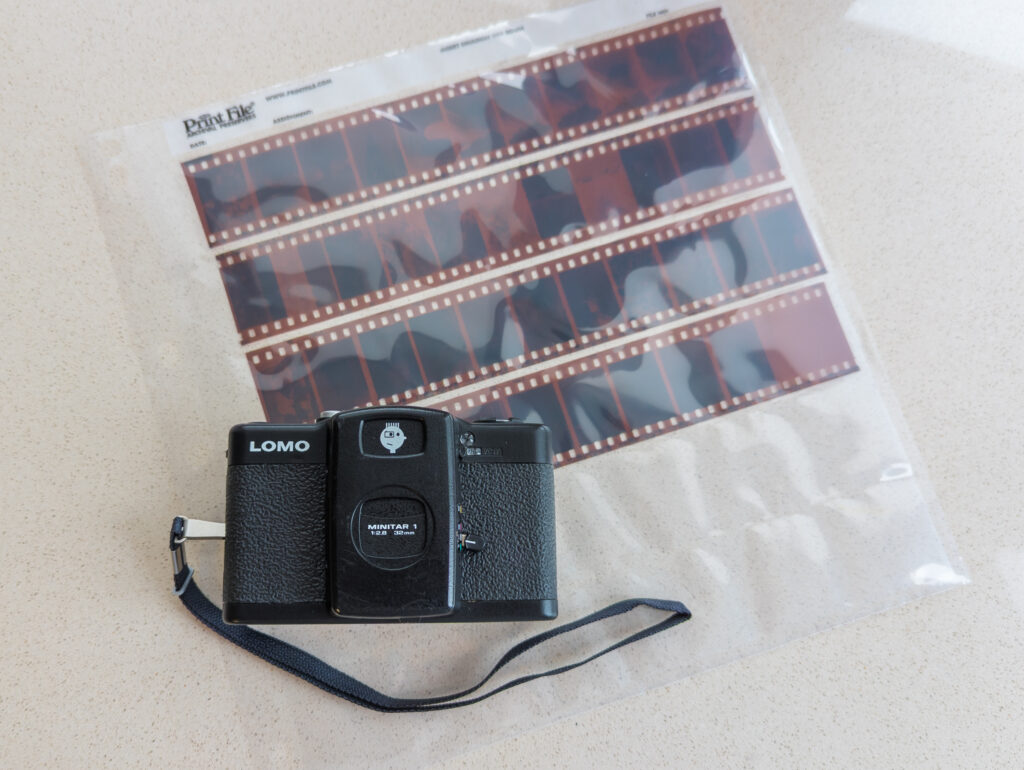




Comments
Michael Zwicky-Ross on The 110 Saga Continues – Post Mortem Discoveries
Comment posted: 05/12/2023
Comment posted: 05/12/2023
Lance on The 110 Saga Continues – Post Mortem Discoveries
Comment posted: 06/12/2023
Comment posted: 06/12/2023
Myles Davis on The 110 Saga Continues – Post Mortem Discoveries
Comment posted: 06/12/2023
Comment posted: 06/12/2023
Jeremy on The 110 Saga Continues – Post Mortem Discoveries
Comment posted: 06/12/2023
Comment posted: 06/12/2023
Dave Powell on The 110 Saga Continues – Post Mortem Discoveries
Comment posted: 06/12/2023
Two 110s that could produce even more unbelievable results for you are Kodak's Pocket Instamatic 60 and Canon's ED20. In my experience, they're two of the finest 110s ever made. (I wasn't impressed with the Fujica!)
The Pocket Instamatic 60 was technically the first 110 camera-- hand-engineered in Kodak's labs for the announcement of their "new" 110-cartridge format. And their attention to quality certainly shows.
Great work Tony!
Comment posted: 06/12/2023